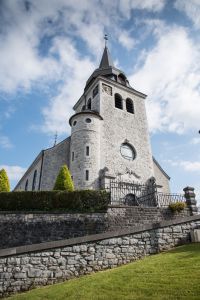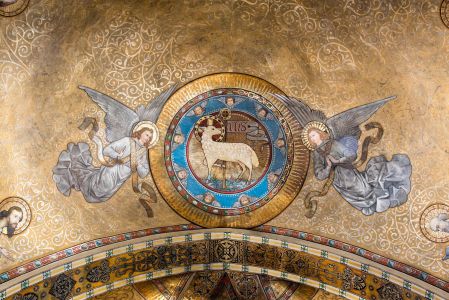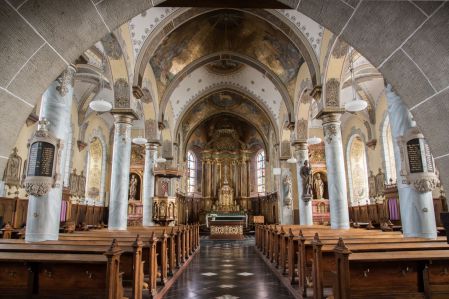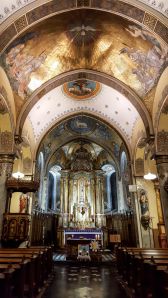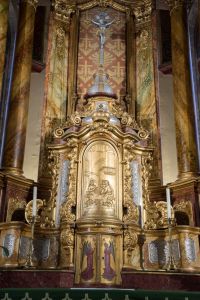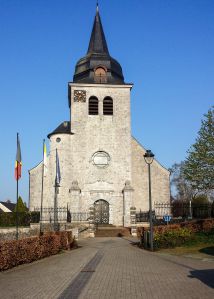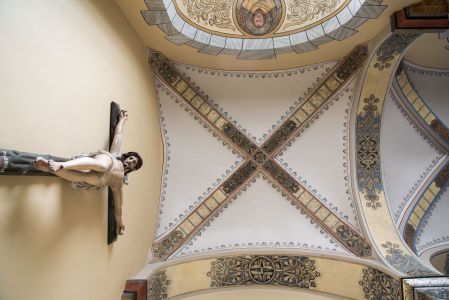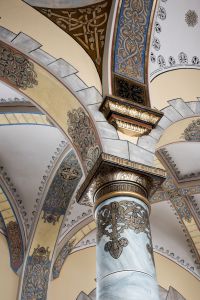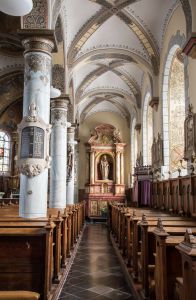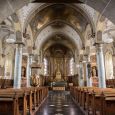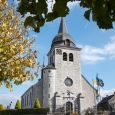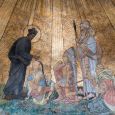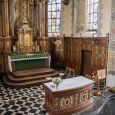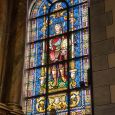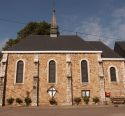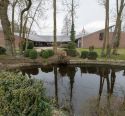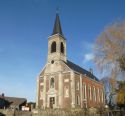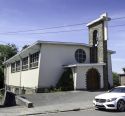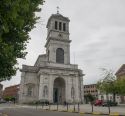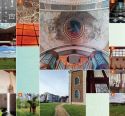Church | 1770 | Romanesque | Catholic Church




Map
Opening hours
01 April - 30 September
Mon 9.00 - 19.00
Tue 9.00 - 19.00
Wed 9.00 - 19.00
Thu 9.00 - 19.00
Fri 9.00 - 19.00
Sat 9.00 - 19.00
Sun 9.00 - 19.00
01 October - 31 March
Mon 9.00 - 17.00
Tue 9.00 - 17.00
Wed 9.00 - 17.00
Thu 9.00 - 17.00
Fri 9.00 - 17.00
Sat 9.00 - 17.00
Sun 9.00 - 17.00
Guided tour
+32 87 65 22 58
Religious offices
Sunday 11am
Description
Photos
Media
Remarkable elements
The history of Saint-Hubert church
The current limestone church replaces the late 14th century Gothic church and a first 11th century chapel dedicated to Saint Hubert. Its foundations were rediscovered at the beginning of the 21st century when the heating system was renovated. The current building was built between 1768 and 1771 according to the plans of the Italian architect Joseph Moretti. A major series of exterior and interior renovations followed one another during the first two decades of the 21st century.
A particular architecture
Built on a hill with a surrounding wall on the north side, the present church underwent surprising work in 1910 and 1911 when the classic spire of the churches in the region had to be demolished. It dated from the church before 1768 and threatened to be ruined. At that time, the tower on the façade was raised and surmounted by an octagonal bell tower that is atypical for the region and which is now its main feature. We also note the two clock dials fixed to the northwest corners of the tower.
The Baptismal Chapel
The chapel contains rich and very fine 18th century decorations that were not replaced in 1906/1908 and a bust of God the Father in the clouds (1770). Baptismal fonts from the 19th century.
Vault paintings
The paintings are of exceptional quality and date back to 1906-1908, except for the baptismal chapel. They are the work of the Aachen painter Carl Bränner. They represent significant biblical scenes: in the choir, the Paschal Lamb surrounded by the evangelists, then the stag which evokes God's thirst and the doves at the spring of living water, the conversion and evangelization of the pagans by Saint Boniface and Saint Francis Xavier, the dove of the Holy Spirit, Noah's Ark and finally a later medallion and an unknown author with Saint Cecilia surrounded by a cloud of angels. Partially gilded, the paintings extend over the columns...
Altars and furniture of the church
The high altar, made in 1776 by Köhler, is characterized by an altarpiece with a pediment forming a canopy carried by 6 long columns. The 2017 renovation work made it possible to rediscover its beauty and colours as well as the scenes in the tabernacle, as told by the disciples of Emmaus. The side altars with Saint Hubert on the right and the Virgin and Child on the left are slightly later than the main altar. The communion bench and confessional date back to 1772; the pulpit and wall carpentry, as well as the Way of the Cross, date from the 1870s.
Windows
The niches of the side windows are decorated with medallions representing the 12 apostles and their iconographic attributes. All but Saint John died martyred, hence the frequent presence of an olive branch symbol of martyrdom and symbols representing the instruments of their martyrs.
The stained glass windows in the choir represent Saint Hubert and Saint Wendelin, patron saint of farm animals. They are the work of the same workshop in Ghent as the superb stained glass window representing Saint Cecilia in the tower above the porch.



